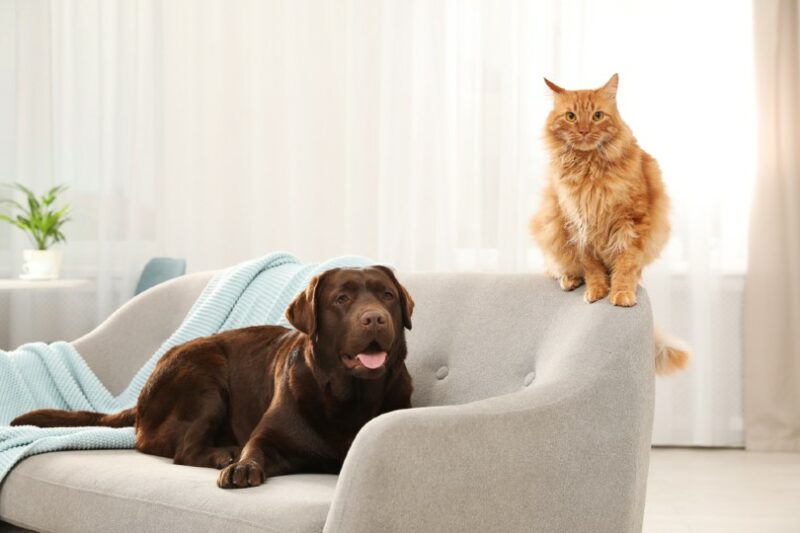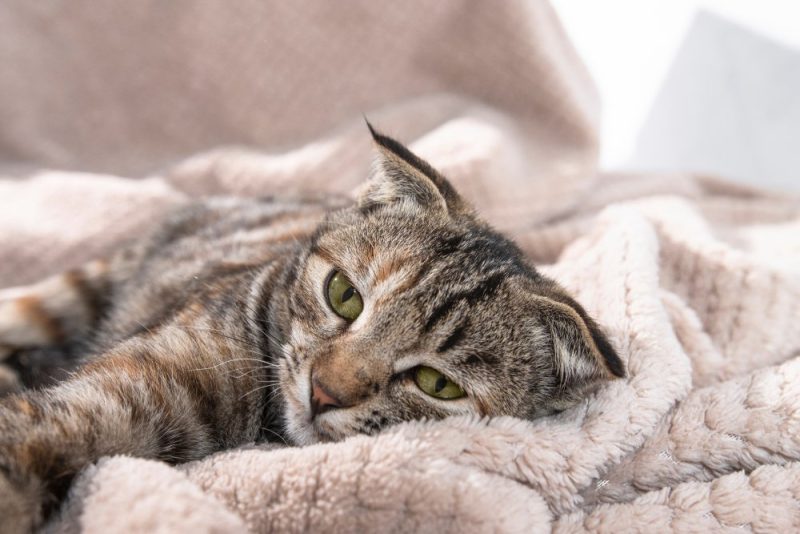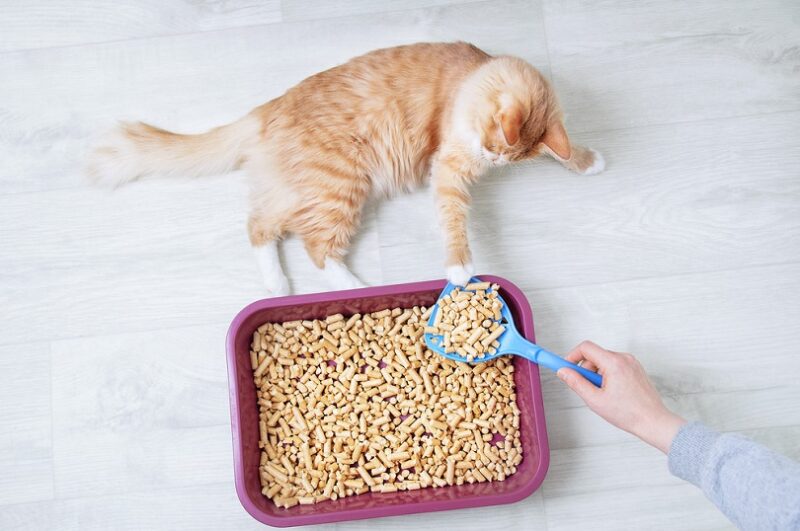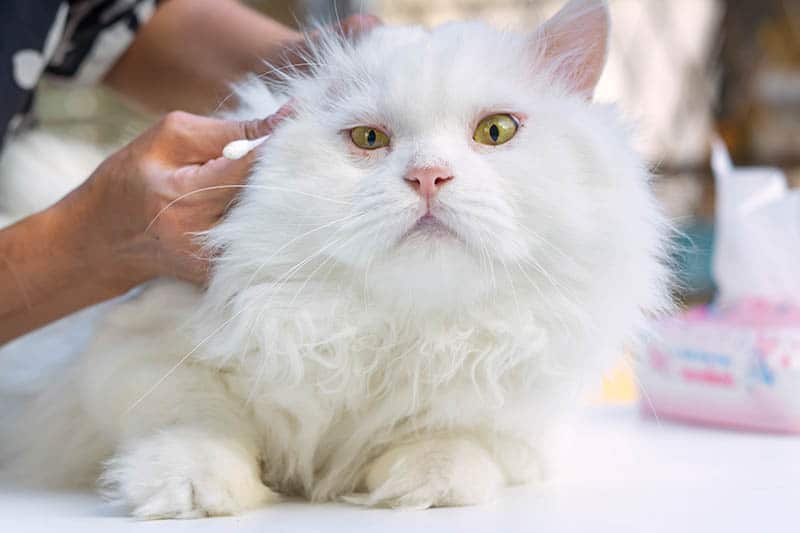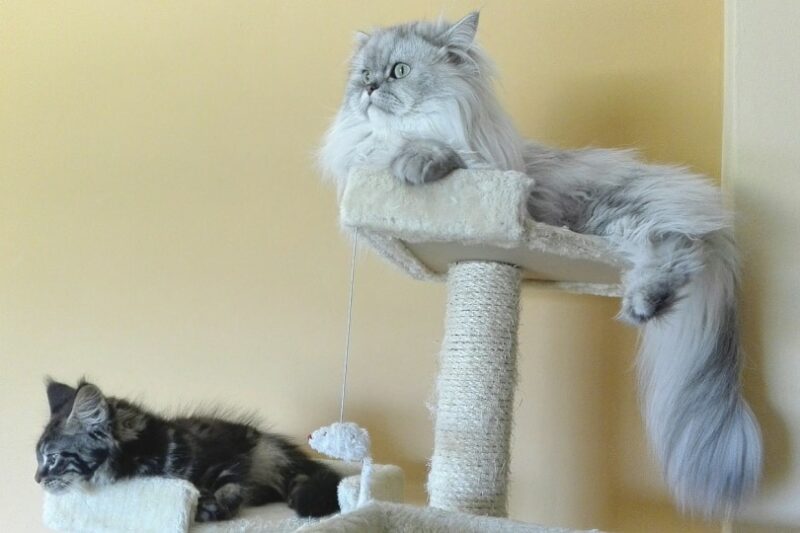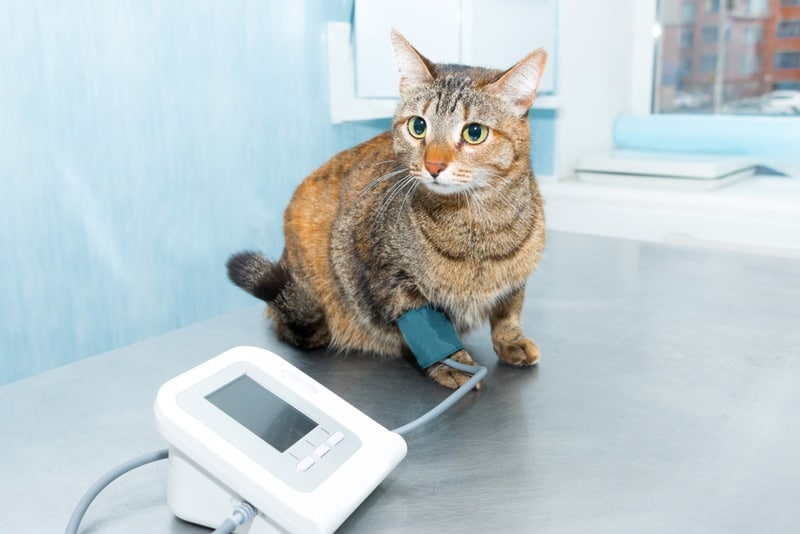Even if both animals have grown up with members of the other species, most dogs and cats take a little bit to get used to each other. The early days of introduction are essential to the pet’s later relationship. Each dog and cat is an individual, so the difficulty of their first meeting will differ.
No matter your pet’s personality, though, you should carefully introduce them very carefully at first. In this article, we’ll help you do just that!

How to Introduce a Dog to a Cat
1. Isolate the Animals
You should never throw two unintroduced pets into the same room together. Even if both are pretty laidback, you can never predict what they’ll do when allowed to have free access to each other. Therefore, your first step is to isolate your two pets. If you just adopted one pet, confine that one to a room with everything they need. For bigger dogs, you may need to give them multiple rooms.
You should begin by introducing the animals through the door. Feed both animals at the door to get used to each other’s smell and associate it with something enjoyable—eating. If your pets have bedding that is shareable, you can switch it out every day to introduce the scents even more.
2. Allow Them to See Each Other
Use two heavy doorstops to prop open the door just enough so that the animals can see each other. Be sure to keep an eye on them the whole time. After a few minutes, close the door. You should do this every day until the pets don’t seem to pay much attention to each other anymore. This may only take a few days or a week.
The pets don’t need to be completely okay with each other yet. This is simply the first step towards introducing them together.
3. Switch Living Areas
Next, you should switch the living areas of the animals. This will ensure that they get used to each other’s scent. The other animal will become “normal” without much contact. It also allows the new animal to get used to the rest of the house without the other animal hounding them. This is particularly useful for cats, as they will discover hiding places and areas they can climb—helpful information if they’re trying to avoid a dog.
Continue opening the door slightly and allowing the animals to see each other for a second.

4. Avoid Meetings
You shouldn’t have your pets meet at this point. You should take precautions to ensure that a meeting doesn’t happen. If one of the pets is fearful or aggressive during the first meeting, it can quickly become a habit. It is much easier to avoid a problem to begin with than fix a problem behavior later.
Introducing the animals too soon can undo everything you’ve done thus far. Patience is key in this endeavor.
Even if animals are playing together, a larger dog can kill a cat quite quickly. This is especially true if the feline doesn’t know where to escape to. Therefore, playing together should not be encouraged.
5. Practice Obedience
If your dog does not know basic commands yet, now is the time to teach them. Basic obedience is essential. For introductions between cats and dogs, the command “leave it” can be most important. If your dog performs well with the “leave it” command, it can prevent problems with the new cat before they start.
Your dog should also know “sit,” “come,” and “stay,” as these commands can also become very useful during meetings. When you introduce your cat and dog, feel free to use treats to coax your dog into performing the commands appropriately.

6. The First Meeting
After practicing some obedience and getting the animals used to each other safely, it is time for the first face-to-face meeting. This likely won’t go as well as you hope. But, that’s okay! It’s only the first meeting. You should put your dog’s leash on and instruct them to lie down and stay.
Have a family member or friend enter the room with the feline. This person’s job is to keep the cat calm, but they should never restrain the cat. Ensure your cat has somewhere safe to run to if they feel the need. Cat trees or under furniture may be good choices—play on offering the feline some special treats or even some catnip right before the meeting.
Next, open the door all the way. At first, the dog should not enter the room. Allow the animals to look at each other through the open doorway. If the dog gets up to go after the cat, coax them back into position, closing the door if necessary.
This first meeting should be concise. Don’t drag it out until the animals are stressed. You want it to end on a good note.
7. Continued Meetings
Repeat the same step as above for a few more visits. As the animals seem comfortable with each other, allow the dog to enter the room. At first, stay on the opposite side of the room. If the animals seem comfortable after a meeting with the dog in the room, you may get slightly closer to the cat.
After a few meetings, your goal is to get both animals next to each other. The dog should never make movements toward the cat, especially jumping or aggressive movements. You don’t want your canine trying to play with the cat. You want both animals to be calm.
Allow the cat to come to your dog as they want. Praise and treat both animals for being calm. If the cat runs away or becomes aggressive, you have progressed too fast.

8. Continue Positive Reinforcement
As your animals get used to each other, continue treating and rewarding them for calm behavior. Preferably, your animals shouldn’t pay much attention to each other. Your goal is for them to be calm and natural—not fixated on each other’s presence.
9. Let Your Cat Roam the House
When you’re confident in both animal’s behavior, you can let the cat roam the house when you’re home. You may want to have your dog on the leash during the first few times, as they may react differently with your cat just wandering around. Be sure your cat always has somewhere to go. You may want to place a baby gate between the “cat’s room” and the rest of the house. The cat will be able to jump the baby gate, but the dog likely will not.
This gives your cat somewhere to hide and get away from the dog if necessary. You should always put the cat back in their room when you are not home. Only allow your cat to roam unsupervised when you’re confident that the dog will not injure the cat.
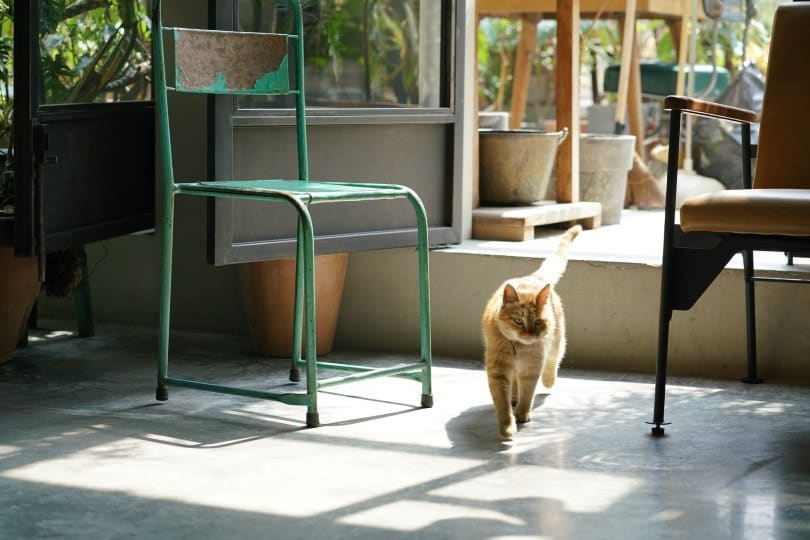

Precautions to Consider
When you introduce a cat or dog into your household, there are a few things you need to consider.
Dogs may prefer to eat cat food. If your dog is particularly fixated on your cat’s food, it may be a sign that your canine’s food isn’t up to snuff. Luckily, eating cat food won’t necessarily hurt your dog. Typically, they aren’t nutritionally complete for dogs since they’re designed for cats. You should plan on putting your cat’s food up somewhere the dog cannot reach.
Dogs may also attempt to invade the litter box. Eating cat feces is actually quite common. There isn’t any direct health hazard for your dog, though the litter itself can cause problems. This is especially true if it is clay litter.
Luckily, there are many ways to solve this problem. For instance, you can purchase dog-proof litter boxes. You can also put the litter box somewhere your cat cannot access, like behind a baby gate.

For Kittens, Move Even Slower
Kittens are significantly more vulnerable to dogs. An energetic dog can easily injure a cat, even if they don’t mean to. You will need to supervise all interactions until the kitten is fully grown. Even if the cat isn’t aggressive, one swipe of a dog can injure a kitten severely.
You might also be interested in some of our other top trending posts:
- How to Get a Cat to Like a Puppy (10 Proven Methods)
- How to Introduce a Hyper Dog to a Kitten (Step-By-Step Guide)
- How Do Cats Play with Dogs? Body Language & Behaviors Explained
- Can A Dog Get A Cat Pregnant? Vet-Reviewed Facts & FAQs
Featured Image Credit: New Africa, Shutterstock
